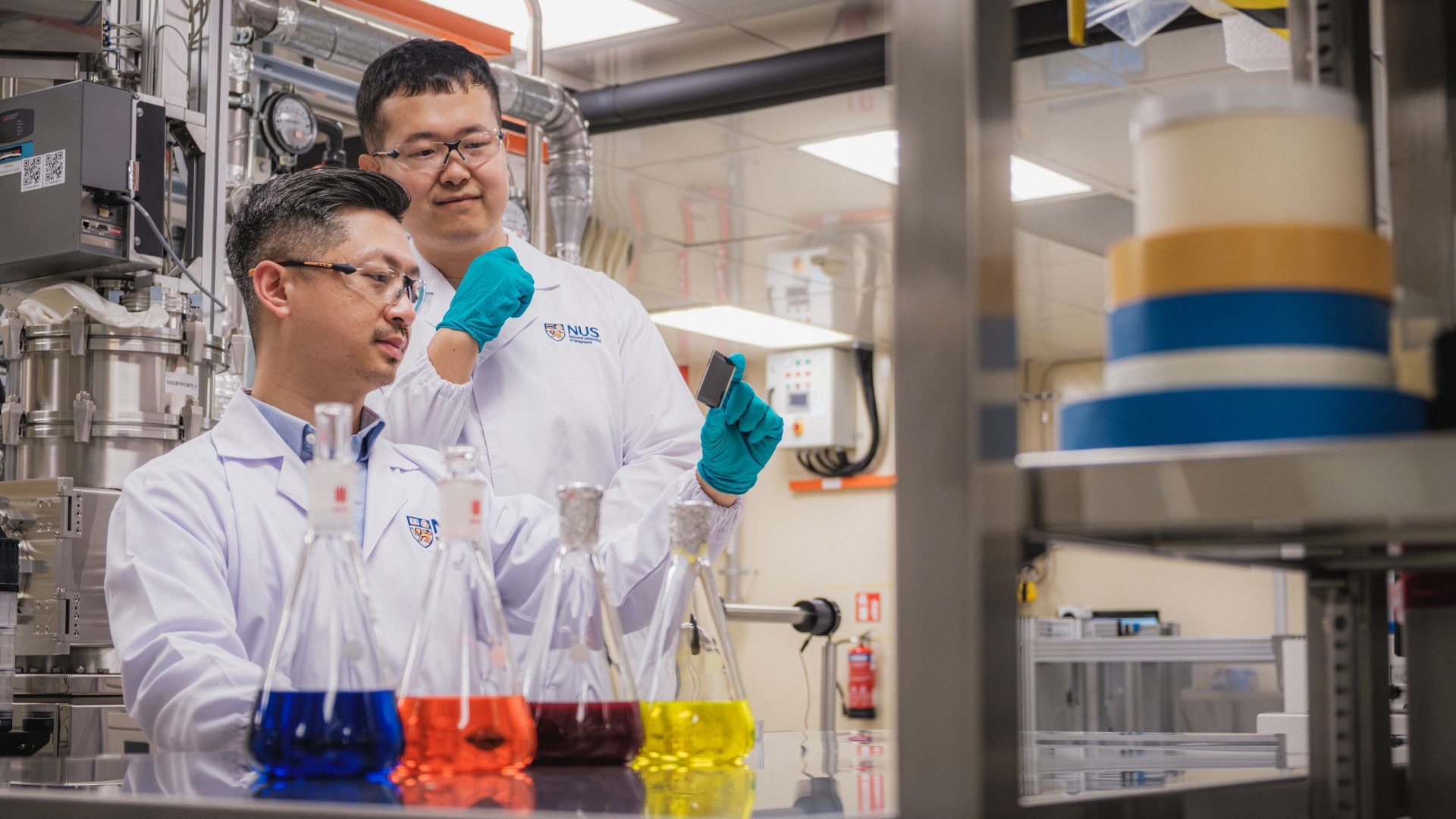Researchers at the National University of Singapore have set a new record for perovskite-organic tandem solar cells, achieving a certified 26.4% power conversion efficiency in 1 cm2 devices.

NUS scientists set a new benchmark in the power conversion efficiency of perovskite-organic tandem solar cells by introducing a newly designed narrow-bandgap organic absorber, which significantly boosts near-infrared (NIR) photon harvesting - a long-standing bottleneck in thin-film tandem solar cells. Image Credit: National University of Singapore
The study, published in Nature, reveals how they developed their solar cell, the highest-performing device of its type to date.
Their achievement is attributed to a newly engineered narrow-bandgap organic absorber. This absorber substantially improves the harvesting of near-infrared (NIR) photons, addressing a long-standing challenge in thin-film tandem solar cells.
Unlocking the Promise of Tandem Solar Cells
Perovskites and organic semiconductors both have broadly tunable band gaps, which allow researchers to develop these perovskite-organic tandem solar cells with promising theoretical efficiency.
Thanks to their light weight and flexible form factor, perovskite–organic tandem solar cells are ideally suited to power applications that are run directly on devices such as drones, wearable electronics, smart fabrics, and other AI-enabled devices.
Hou Yi, Assistant Professor, National University of Singapore
Despite their potential, perovskite–organic tandem cells have been slow to progress in photovoltaic research due to their lack of efficient NIR thin-film absorbers. Without them, these tandem solar cells cannot capture sunlight very well in the NIR region, which reduces their overall efficiency.
Harnessing the Near-Infrared
Hou and his group have overcome this difficulty by creating an asymmetric organic acceptor with an extended conjugation structure. This acceptor permits absorption deep into the near-infrared spectrum, while preserving a strong enough driving force to allow for effective charge separation and encourage ordered molecular packing.
The researchers used ultrafast spectroscopy and device physics analyses to confirm that this design minimizes energy loss and also achieves high free charge carrier collection.
The researchers built on the performance of the organic subcells by stacking these cells below a high-efficiency perovskite top cell, using a transparent conducting oxide-based interconnector to join the two layers together.
The newly designed tandem cell had a power conversion efficiency of 27.5 % in 0.05 cm2 samples, and it was measured to be 26.7 % in 1 cm2 devices. A power conversion efficiency of 26.4 % was independently certified, a new benchmark among perovskite-organic, perovskite-CIGS, and single-junction perovskite cells of similar size.
With efficiencies poised to exceed 30 %, these flexible films are ideal for roll-to-roll production and seamless integration onto curved or fabric substrates think self-powered health patches that harvest sunlight to run onboard sensors or smart textiles that monitor biometrics without the need for bulky batteries.
Hou Yi, Assistant Professor, National University of Singapore
Next Step
The next phase of the project will focus on boosting the devices' long-term stability under real-world conditions and transitioning toward pilot-line manufacturing. Both are key steps in bringing this versatile solar technology closer to commercial use.
Journal Reference:
Jia, Z., et al. (2025) Efficient near-infrared harvesting in perovskite–organic tandem solar cells. Nature. doi.org/10.1038/s41586-025-09181-x, https://www.nature.com/articles/s41586-025-09181-x